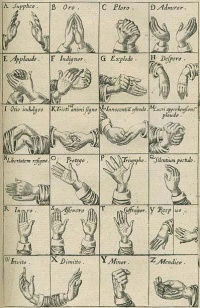Rhetoric
From The Art and Popular Culture Encyclopedia

Illustration: a close-up of a mouth in the film The Big Swallow (1901)
|
"Plato (427–347 BC) famously outlined the differences between true and false rhetoric in a number of dialogues; particularly the Gorgias and Phaedrus dialogues wherein Plato disputes the sophistic notion that the art of persuasion (the sophists' art, which he calls "rhetoric"), can exist independent of the art of dialectic. Plato claims that since sophists appeal only to what seems probable, they are not advancing their students and audiences, but simply flattering them with what they want to hear. While Plato's condemnation of rhetoric is clear in the Gorgias, in the Phaedrus he suggests the possibility of a true art wherein rhetoric is based upon the knowledge produced by dialectic, and relies on a dialectically informed rhetoric to appeal to the main character, Phaedrus, to take up philosophy. Thus Plato's rhetoric is actually dialectic (or philosophy) "turned" toward those who are not yet philosophers and are thus unready to pursue dialectic directly. Plato's animosity against rhetoric, and against the sophists, derives not only from their inflated claims to teach virtue and their reliance on appearances, but from the fact that his teacher, Socrates, was sentenced to death after sophists' efforts." --Sholem Stein |
|
Related e |
|
Featured: |
Rhetoric is the art of discourse, wherein a writer or speaker strives to inform, persuade or motivate particular audiences in specific situations. It can also be in a visual form. As a subject of formal study and a productive civic practice, rhetoric has played a central role in the European tradition. Its best known definition comes from Aristotle, who considers it a counterpart of both logic and politics, and calls it "the faculty of observing in any given case the available means of persuasion." Rhetoric typically provides heuristics for understanding, discovering, and developing arguments for particular situations, such as Aristotle's three persuasive audience appeals, logos, pathos, and ethos. The five canons of rhetoric, which trace the traditional tasks in designing a persuasive speech, were first codified in classical Rome: invention, arrangement, style, memory, and delivery. Along with grammar and logic (or dialectic—see Martianus Capella), rhetoric is one of the three ancient arts of discourse.
From Ancient Greece to the late 19th century, it was a central part of Western education, filling the need to train public speakers and writers to move audiences to action with arguments.
Etymology
Borrowed from Old French rhetorique, from Latin rhētorica, from Ancient Greek ῥητορική (rhētorikḗ), ellipsis of ῥητορικὴ τέχνη (rhētorikḕ tékhnē), from ῥητορικός (rhētorikós, “concerning public speech”), from ῥήτωρ (rhḗtōr, “public speaker”).
See also
- Argumentation Theory
- Artes Liberales
- Casuistry
- Civic humanism
- Composition studies
- Critical Theory
- Critical thinking
- Demagogy
- Dialogue
- Elocution
- eRhetoric
- Fallacies
- Figure of Speech
- Figure of thought
- Grammar
- Hermeneutics
- Homiletics
- Language and thought
- Linguistics
- Logic
- New rhetoric
- Oratory
- Pedagogy
- Persuasion
- Persuasion technology
- Phenomenology
- Platonism
- Political rhetoric
- Post-realism
- Post-structuralism
- Propaganda
- Public speaking
- Rhetorical criticism
- Rhetorical operations
- Rhetorical reason
- Rogerian argument
- Semiology
- Sophism
- Technical communication
- Trivium (education)
- Visual rhetoric
- Miscellaneous terms
- Ad captandum
- Allusion
- Ambiguity
- Anaptyxis
- Antimetabole
- Aphesis
- Aphorism
- Apologue
- Aposiopesis
- Archaism
- Atticism
- Brachyology
- Cacophony
- Catachresis
- Chiasmus
- Circumlocution
- Climax
- Conceit
- Eloquence
- Enthymeme
- Ethos
- Euphemism
- Figure of speech
- Formal equivalence
- Hendiadys
- Hysteron-proteron
- Idiom
- Innuendo
- Ipsedixitism
- Kairos
- Kenning
- Krisis
- Logos
- Literary topos
- Logical fallacies
- Mediation
- Merism
- Metanoia
- Mnemonic
- Negation
- Overdetermination
- Parable
- Paraphrase
- Paraprosdokian
- Pathos
- Pericope
- Period
- Perissologia
- Praeteritio
- Proverb
- Representation
- Rhetoric of science
- Rhetorical device
- Rhetorical figure
- Rhetorical stance
- Soundbite
- Synchysis
- Synesis
- Synonymia
- Tautology
- Tertium comparationis
- Trope
- Truism
- Word play
- Political speech resources


